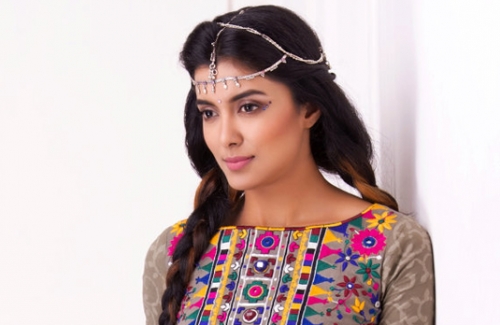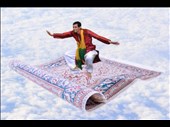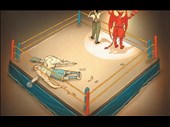Solution for: Trends in the Indian fashion and textile industries
Answer Table
| 1. labels | 8. TRUE |
| 2. bargain | 9. NOT GIVEN |
| 3. plastic | 10. TRUE |
| 4. traditional | 11. FALSE |
| 5. masculine | 12. FALSE |
| 6. showy | 13. TRUE |
| 7. ethnic |
Exam Review
Trends in the Indian fashion and textile industries

During the 1950s, the Indian fashion scene was exciting, stylish and very graceful. There were no celebrity designers or models, nor were there any labels that were widely recognised. The value of a garment was judged by its style and fabric rather than by who made it. It was regarded as perfectly acceptable, even for high-society women, to approach an unknown tailor who could make a garment for a few rupees, providing the perfect fit, finish and style. They were proud of getting a bargain, and of giving their own name to the end result.
The 1960s was an era full of mischievousness and celebration in the arts, music and cinema. The period was characterised by freedom from restrictions and, in the fashion world, an acceptance of innovative types of material such as plastic and coated polyester. Tight-fitting kurtas[1] and churidars[2] and high coiffures were a trend among women.
The following decade witnessed an increase in the export of traditional materials, and the arrival in India of international fashion. Synthetics became trendy, and the disco culture affected the fashion scene.
It was in the early 80s when the first fashion store ‘Ravissant’ opened in Mumbai. At that time garments were retailed for a four-figure price tag. American designers like Calvin Klein became popular. In India too, contours became more masculine, and even the salwar kameez[3] was designed with shoulder pads.
With the evolution of designer stores came the culture of designer fashion, along with its hefty price tags. Whatever a garment was like, consumers were convinced that a higher price tag signified elegant designer fashion, so garments were sold at unbelievable prices. Meanwhile, designers decided to get themselves noticed by making showy outfits and associating with the right celebrities. Soon, fashion shows became competitive, each designer attempting to out-do the other in theme, guest list and media coverage.
In the last decade of the millennium, the market shrank and ethnic wear made a comeback. During the recession, there was a push to sell at any cost. With fierce competition the inevitable occurred: the once hefty price tags began their downward journey, and the fashion-show industry followed suit. However, the liveliness of the Indian fashion scene had not ended - it had merely reached a stable level.
At the beginning of the 21st century, with new designers and models, and more sensible designs, the fashion industry accelerated once again. As far as the global fashion industry is concerned, Indian ethnic designs and materials are currently in demand from fashion houses and garment manufacturers. India is the third largest producer of cotton, the second largest producer of silk, and the fifth largest producer of man-made fibres in the world.
The Indian garment and fabric industries have many fundamental advantages, in terms of a cheaper, skilled work force, cost-effective production, raw materials, flexibility, and a wide range of designs with sequins, beadwork, and embroidery. In addition, that India provides garments to international fashion houses at competitive prices, with a shorter lead time, and an effective monopoly on certain designs, is accepted the whole world over. India has always been regarded as the default source in the embroidered garments segment, but changes in the rate of exchange between the rupee and the dollar has further depressed prices, thereby attracting more buyers. So the international fashion houses walk away with customised goods, and craftwork is sold at very low rates.
As far as the fabric market is concerned, the range available in India can attract as well as confuse the buyer. Much of the production takes place in the small town of Chapa in the eastern state of Bihar, a name one might never have heard of. Here fabric-making is a family industry; the range and quality of raw silks churned out here belie the crude production methods and equipment. Surat in Gujarat, is the supplier of an amazing set of jacquards, moss crepes and georgette sheers - all fabrics in high demand. Another Indian fabric design that has been adopted by the fashion industry is the ‘Madras check’, originally utilised for the universal lungi, a simple lower-body wrap worn in southern India. This design has now found its way on to bandannas, blouses, home furnishings and almost anything one can think of.
Ethnic Indian designs with batik and hand-embroidered motifs have also become popular across the world. Decorative bead work is another product in demand in the international market. Beads are used to prepare accessory items like belts and bags, and beadwork is now available for haute couture evening wear too.
[1] knee-length tunics
[2] trousers
[3] trouser suit
Questions 1-7
Complete the notes below.
Choose ONE WORD ONLY from the passage for each answer.
Indian fashion: 1950-2000
1950s
- No well-known designers, models or 1
Answer: labels Locate - Elegant clothing cost little
- Women were pleased to get clothes for a 2 price
Answer: bargain Locate
1960s
- New materials, e.g. 3 and polyester
Answer: plastic Locate - Fitted clothing and tall hairstyles
1970s
- Overseas sales of 4 fabrics rose
Answer: traditional Locate - Influence of international fashion
1980s
- Opening of fashion store in Mumbai
- Popularity of American designers
- Clothing had a 5 shape
Answer: masculine Locate - Designers tried to attract attention by presenting 6 clothes and mixing with stars
Answer: showy Locate
1990s
- Fall in demand for expensive fashion wear
- Return to 7 clothing
Answer: ethnic Locate
Questions 8-13
Do the following statements agree with the information given in Reading Passage 1
Write
TRUE if the statement agrees with the information
FALSE if the statement contradicts the information
NOT GIVEN if there is no information on this
8 At the start of the 21st century, key elements in the Indian fashion industry changed.
Answer: TRUE Locate
9 India now exports more than half of the cotton it produces.
Answer: NOT GIVEN Locate
10 Conditions in India are generally well suited to the manufacture of clothing.
Answer: TRUE Locate
11 Indian clothing exports have suffered from changes in the value of its currency.
Answer: FALSE Locate
12 Modern machinery accounts for the high quality of Chapa’s silk.
Answer: FALSE Locate
13 Some types of Indian craftwork which are internationally popular had humble origins.
Answer: TRUE Locate
Other Tests
-
Total questions: 14
- 4- TRUE-FALSE-NOT GIVEN
- 8- Matching Information
- 2- Sentence Completion
-
Total questions: 13
- 5- YES-NO-NOT GIVEN
- 3- Matching Information
- 5- Sentence Completion
-
-
Total questions: 13
- 4- YES-NO-NOT GIVEN
- 5- Matching Information
- 4- Sentence Completion
-
Total questions: 13
- 6- TRUE-FALSE-NOT GIVEN
- 7- Plan, map, diagram labelling
-
Total questions: 13
- 4- Multiple Choice
- 4- YES-NO-NOT GIVEN
- 5- Matching Information











